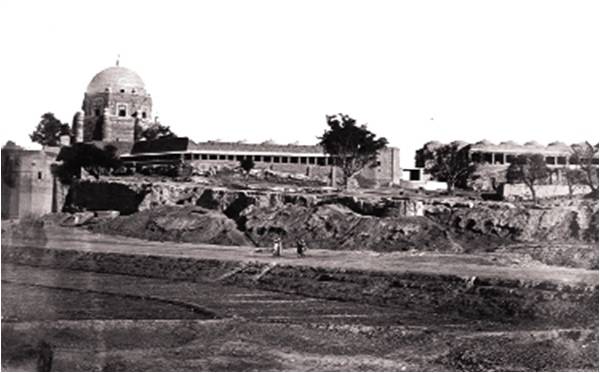
This photograph of the fort at Multan was taken by William Henry Baker in the 1860s, and is part of the Macnabb Collection.
The Multan Fort once had forty-six towers or bastions, including the two flanking towers at each of the four gates. Aurangzeb built a mosque on the site of the temple of Narsingh but the mosque was destroyed in the siege of 1848.
The Mausoleum of Shah Ruknuddin, or Shah Rukn-e-Alam, may be seen on the left of the photograph. This tomb is one of the finest achievements of Multani architecture. It is believed to have been built on the orders of Ghiyasuddin Tughluq (1325-51), Sultan of Delhi, between the years 1320 and 1324. The domed structure is decorated with glazed tiles and has an octagonal plan, with battered walls and sloped turrets.
The Multan Fort once had forty-six towers or bastions, including the two flanking towers at each of the four gates. Aurangzeb built a mosque on the site of the temple of Narsingh but the mosque was destroyed in the siege of 1848.
The Mausoleum of Shah Ruknuddin, or Shah Rukn-e-Alam, may be seen on the left of the photograph. This tomb is one of the finest achievements of Multani architecture. It is believed to have been built on the orders of Ghiyasuddin Tughluq (1325-51), Sultan of Delhi, between the years 1320 and 1324. The domed structure is decorated with glazed tiles and has an octagonal plan, with battered walls and sloped turrets.
– British Library

